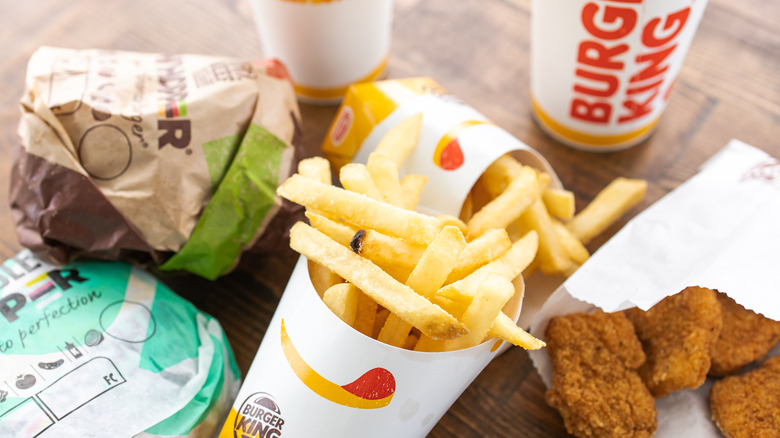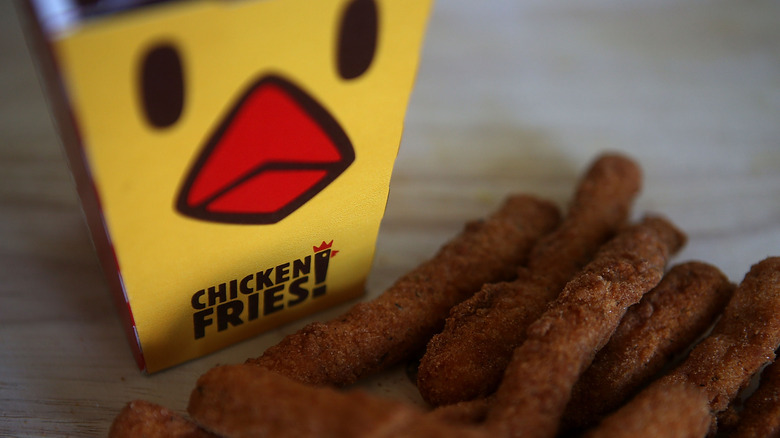The Reason Burger King Changed Its French Fries
Burger King's french fries used to be more similar to McDonald's, but the fast food giant revamped its recipe in 2011. This was the first time it had updated its fries since 1998. The new recipe boasted lower sodium, a thicker texture, and a potato-based coating that offered more crunch. Like any change, it was greeted with mixed reactions from customers. Some patrons called for the old recipe to return, while others praised the company's new approach to the popular side. Regardless of the response, Burger King succeeded in its attempt to make more unique fries. The batter, in particular, has a noticeably different taste from McDonald's and Wendy's fries. Thicker fries also gave customers a different eating experience than the shoestring or hand-cut fries often sold by other chains.
This is why Burger King decided to change things up in the first place. According to Reuters, the restaurant wanted to keep up with the ever-growing competition, which included fellow fast food giants like McDonald's and Wendy's but also applied to newer opponents, like Smashburger. Leo Leon, who was Burger King's vice president of innovation at the time, noted, "French fries are a big seller for us and we want to make sure we're always improving."
This is likely the mindset of most restaurants making similar moves — and Burger King continues to embody those ideals. The company is frequently adding to and altering its menu offerings in the hopes of attracting more business.
How Burger King continues to set itself apart from competitors
Whatever customers think of Burger King's revamped french fries, they certainly set the chain's menu apart. The fast food giant continues to try new things, too: Its latest idea combines onion rings and fries. McDonald's and Wendy's don't offer onion rings, so Burger King already stands out in that regard. Giving the customers the option to combine this popular side with french fries could be a great selling point, drawing them away from the competition. It's too soon to say whether its Fries n' Rings will be successful, but innovation is clearly front of mind at Burger King.
Burger King's Chicken Fries, which debuted in 2005, underscore this point. This unique item appeared on Burger King's menu for years and became immediately associated with the chain. When Chicken Fries disappeared in 2012, it was nearly impossible to find them elsewhere. Customers pushed for their return, and Burger King brought them back, first as a limited offering and then as a permanent menu item. It also added Spicy Chicken Fries, a less surprising development given the options elsewhere.
If nothing else, all the changes to Burger King's menu prove that even the most popular fast food restaurants must keep things fresh for customers. Competition is steep, and with more restaurants opening all the time — and offering similar choices — it's no wonder menu updates are so frequent.

